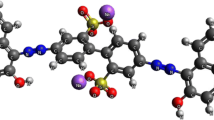Abstract
The ability of larch (Larix leptolepis Gold.) bark to remove Cr(VI) from dilute aqueous solutions was investigated. The research parameters included the solution pH, contact time, temperature and initial concentration of Cr(VI) in solution. Of the parameters studied, the solution pH was found to be the most crucial. The Cr(VI) removal decreased steadily throughout the pH range studied (pH 2–6), while the Cr adsorption peaked at pH 3. Because the chemical reduction of Cr(VI) to trivalent state occurred to lesser extents even in strong acidic media, the Cr(VI) removal was mainly governed by physico-chemical adsorption. The positive value of the heat adsorption (ΔH 0) indicates the endothermic nature of the Cr(VI) adsorption. The relatively slow rate and irreversible nature of the adsorption as well as the order of the magnitude of the heat adsorption value suggest that the adsorption is of a chemical type. The adsorption data obtained from the equilibrium experiments were well fitted to both the Langmuir and Freundlich isotherms.
Similar content being viewed by others
Author information
Authors and Affiliations
Additional information
Received 29 June 1999
Rights and permissions
About this article
Cite this article
Aoyama, M., Tsuda, M. Removal of Cr(VI) from aqueous solutions by larch bark. Wood Science and Technology 35, 425–434 (2001). https://doi.org/10.1007/s002260100103
Issue Date:
DOI: https://doi.org/10.1007/s002260100103




